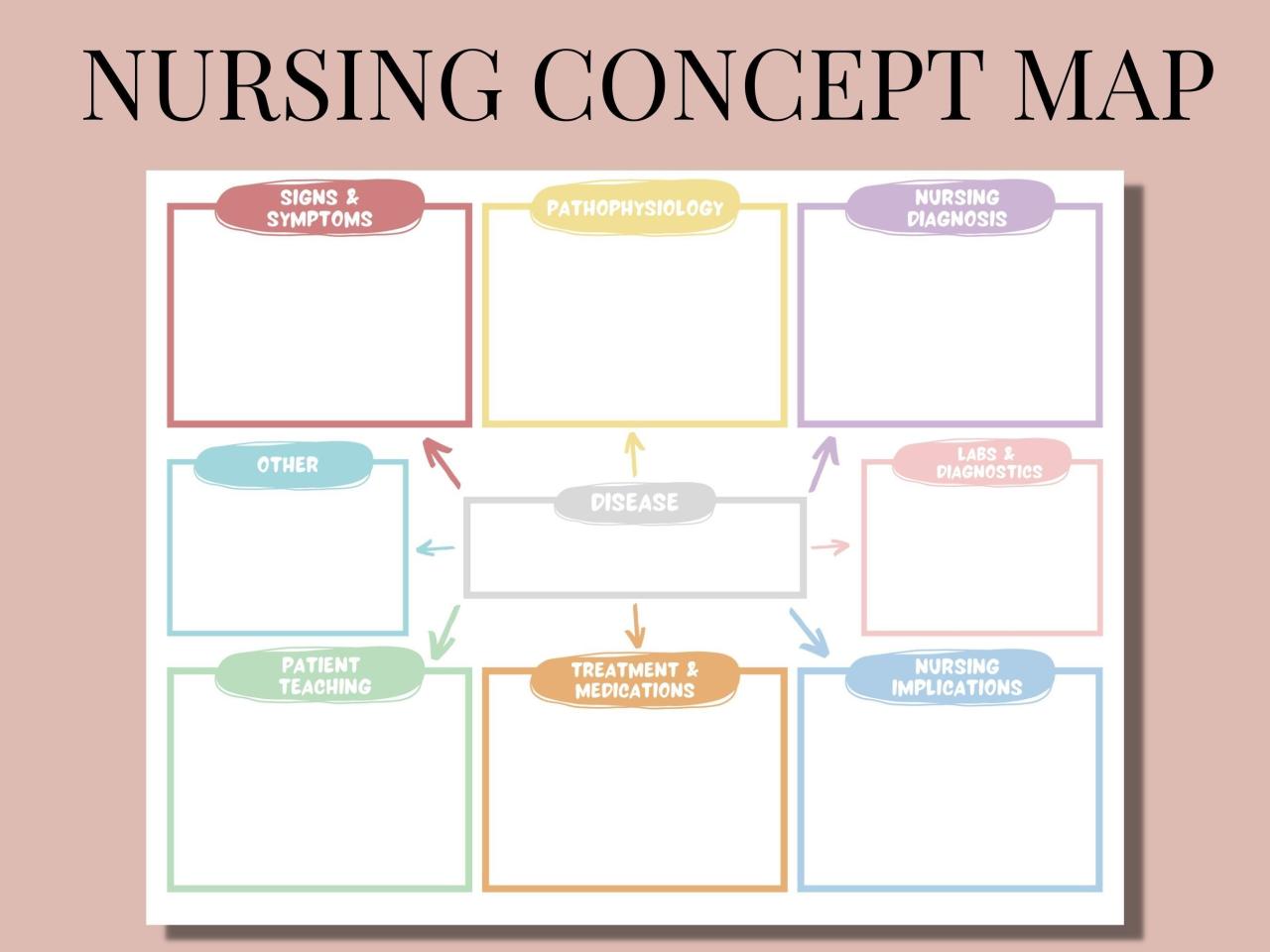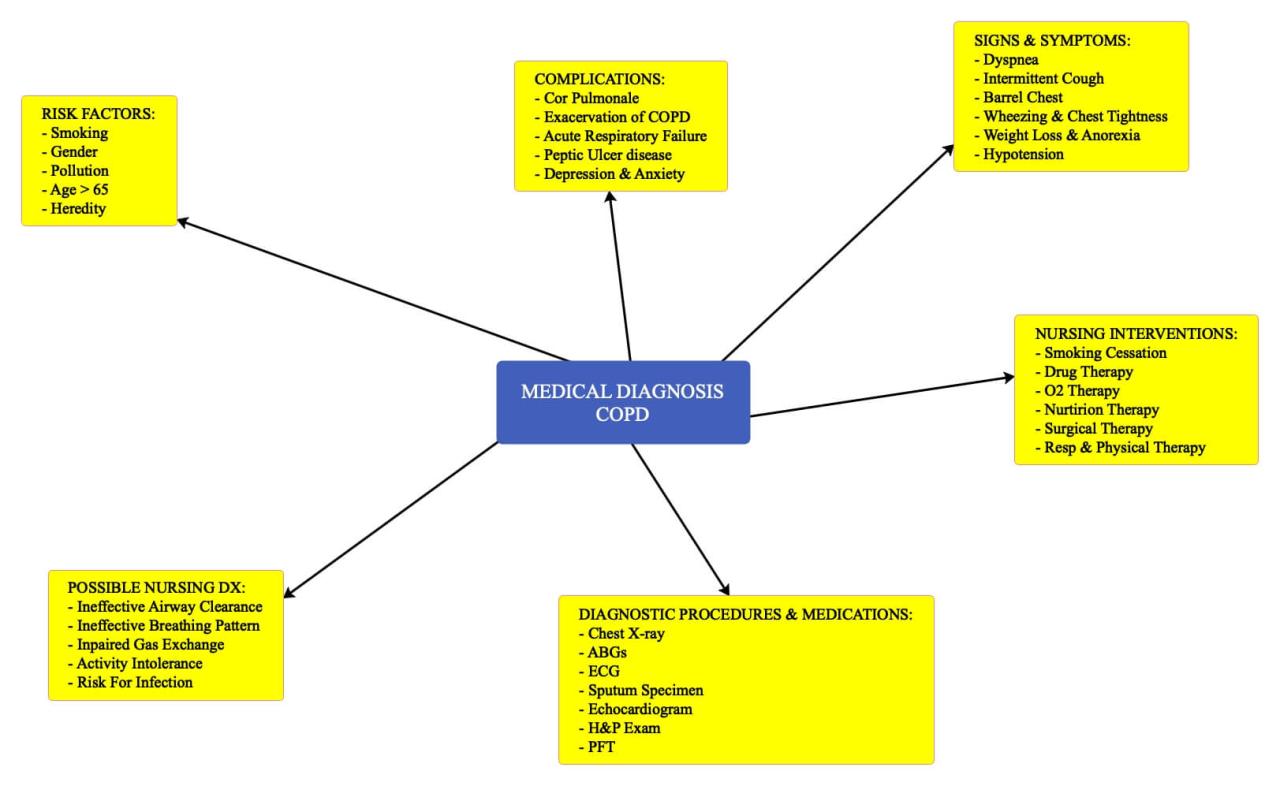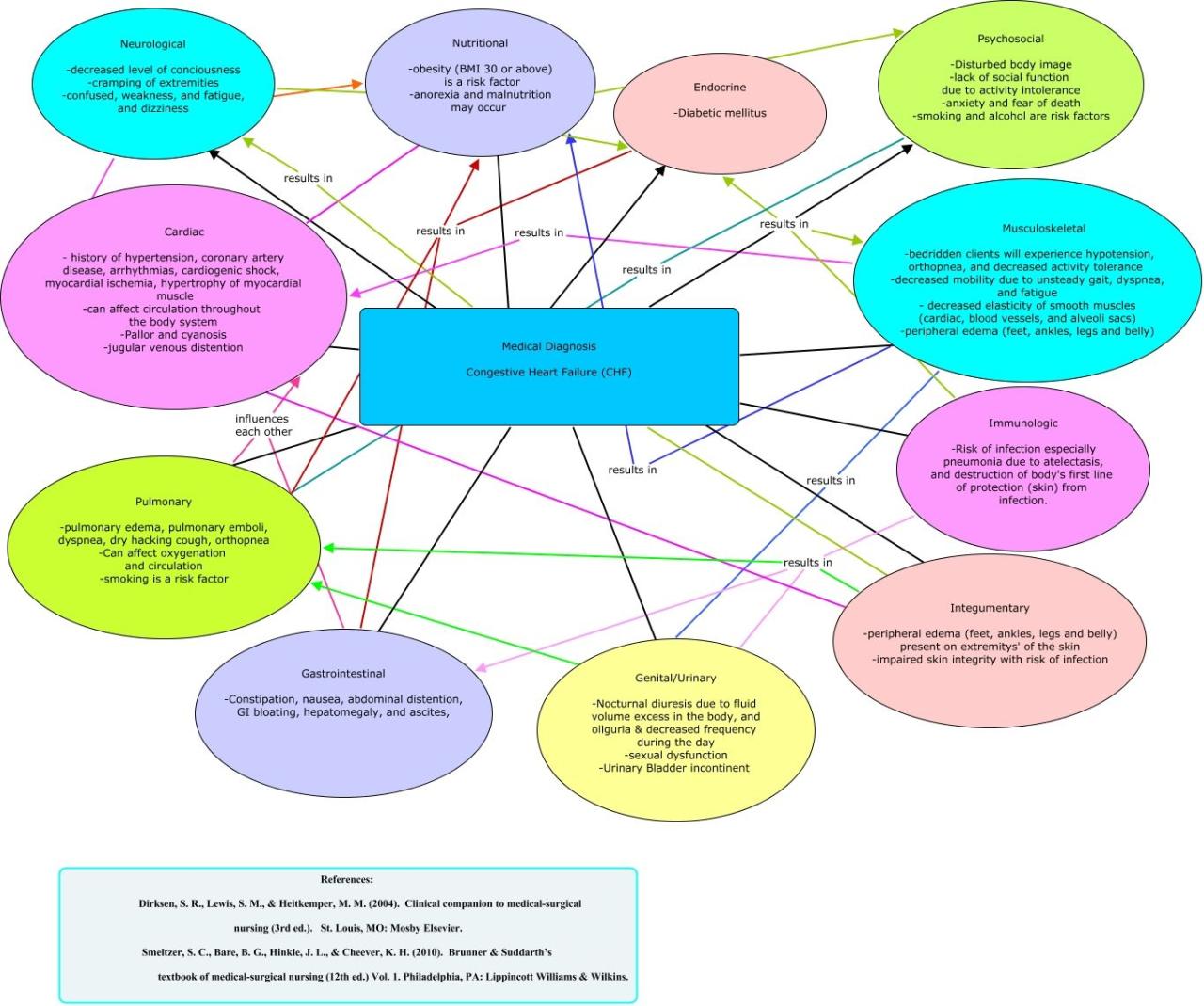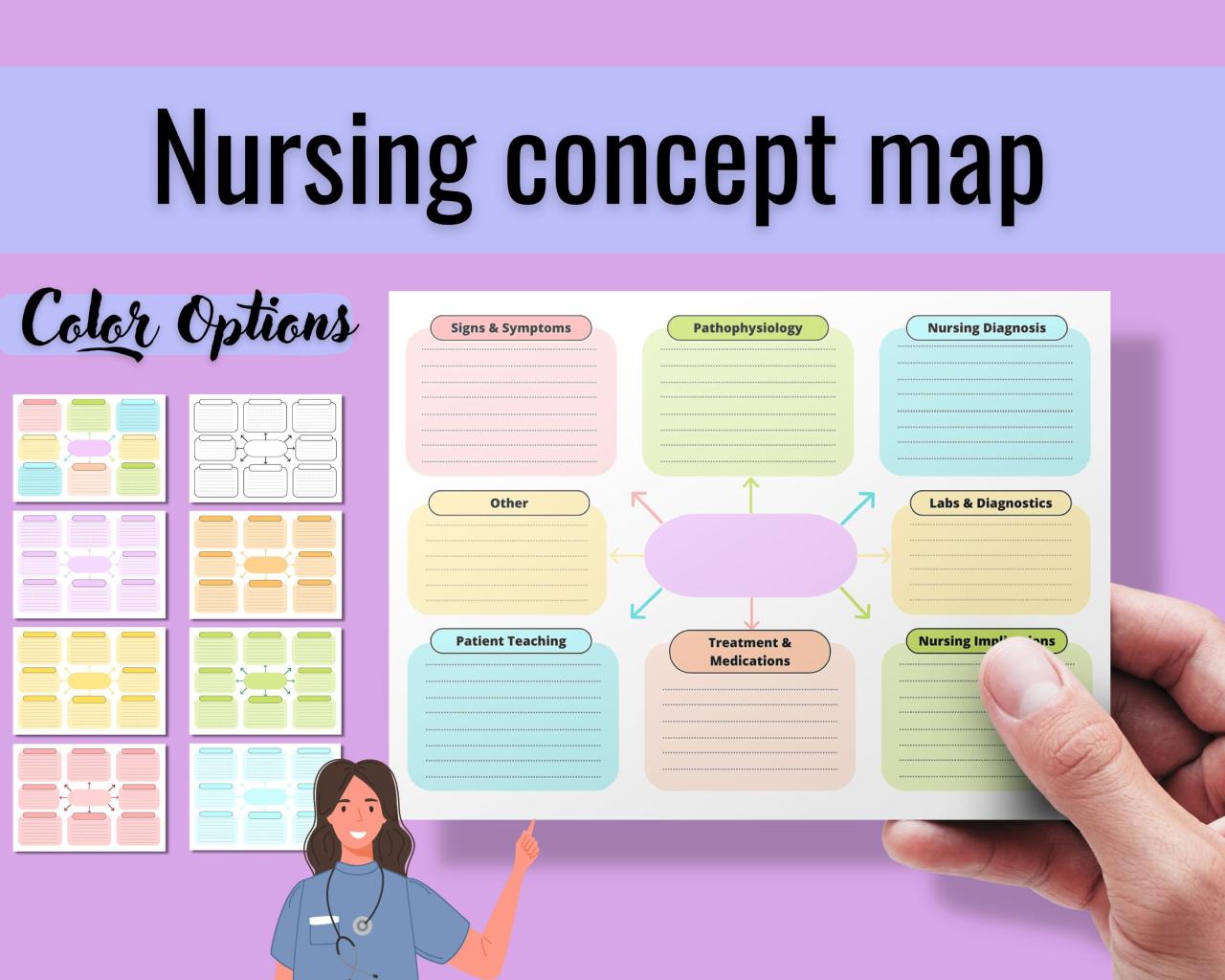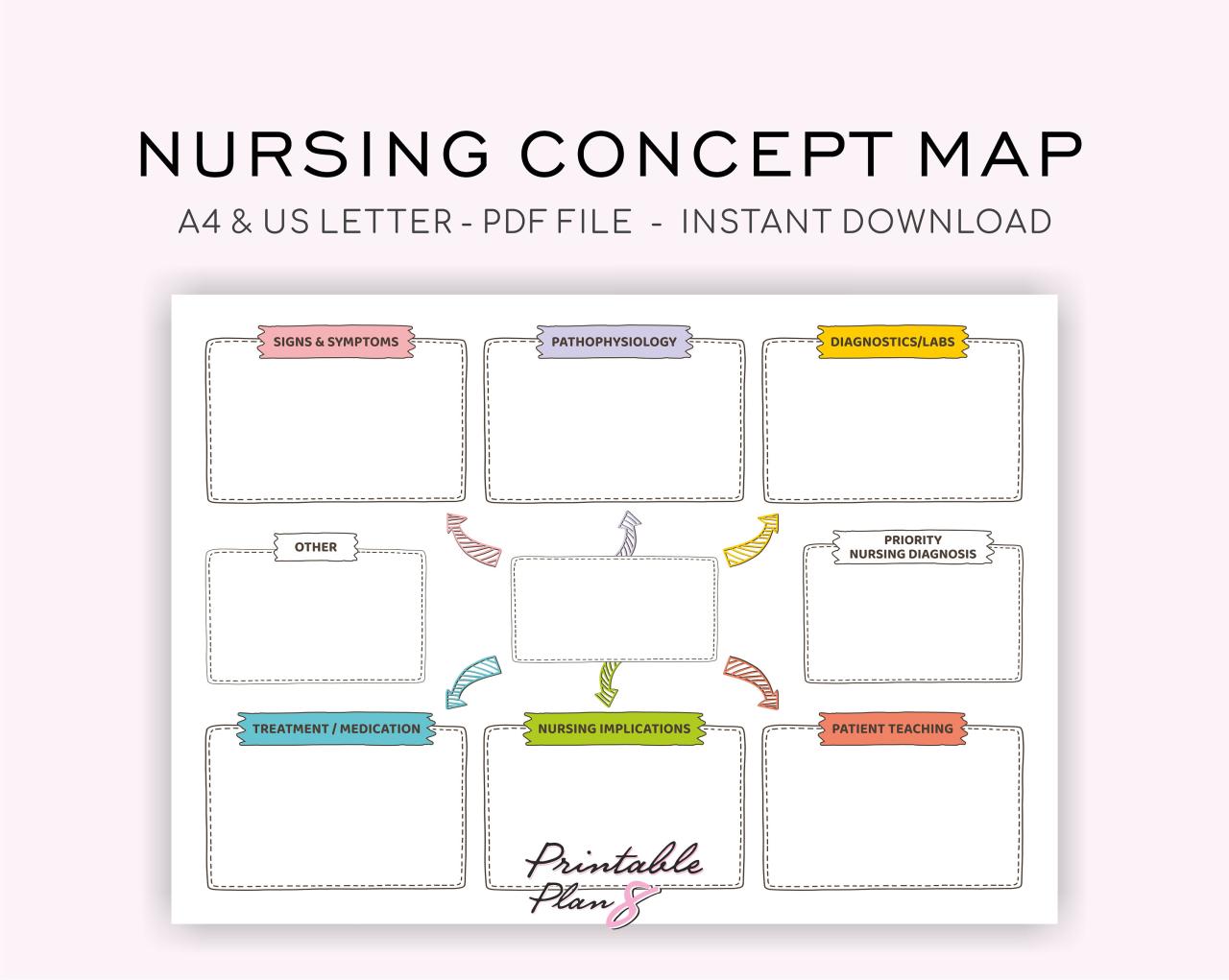Concept map nursing is a powerful tool that helps nurses visualize and organize complex concepts, facilitating deeper understanding and improved patient care. This innovative approach enables nurses to connect ideas, identify relationships, and develop comprehensive care plans that address the unique needs of each individual.
By harnessing the power of visual representation, concept map nursing empowers nurses to enhance their critical thinking skills, improve communication with colleagues and patients, and ultimately deliver more effective and compassionate care.
Concept Mapping in Nursing
Concept mapping is a visual representation of the relationships between concepts. It is a powerful tool that can be used by nurses to organize and understand complex information, identify patterns, and develop new insights.Concept mapping has many benefits for nurses.
It can help them to:
- Improve their understanding of complex concepts
- Identify relationships between concepts
- Develop new insights into patient care
- Communicate more effectively with patients and other healthcare professionals
There are many different types of concept maps that can be used in nursing. Some of the most common types include:
- Hierarchical concept maps: These maps show the relationships between concepts in a hierarchical structure.
- Spider concept maps: These maps show the relationships between concepts in a radial format.
- Flowchart concept maps: These maps show the relationships between concepts in a sequential format.
Concept maps can be used in a variety of ways in nursing practice. Some of the most common uses include:
- Patient assessment: Concept maps can be used to assess patients’ understanding of their health conditions and treatment plans.
- Care planning: Concept maps can be used to develop care plans that are tailored to the individual needs of patients.
- Education: Concept maps can be used to teach patients about their health conditions and treatment plans.
- Research: Concept maps can be used to identify patterns and develop new insights into patient care.
Creating Concept Maps
Creating a concept map involves several steps that guide the identification, organization, and representation of concepts and their relationships. These steps ensure a systematic and structured approach to capturing and visualizing knowledge.
The initial step is identifying the key concepts related to the topic of interest. These concepts should be relevant, significant, and representative of the knowledge domain. Once the concepts are identified, they need to be organized in a meaningful way that reflects their relationships and connections.
Identifying and Organizing Concepts and Relationships, Concept map nursing
- Brainstorming:Generate a comprehensive list of concepts related to the topic.
- Grouping:Organize the concepts into meaningful groups or categories based on their similarities or relatedness.
- Hierarchizing:Establish a hierarchical structure by identifying broader concepts (superordinate concepts) and more specific concepts (subordinate concepts).
- Mapping:Create a visual representation of the concepts and their relationships using a concept mapping tool or software.
Using Appropriate Symbols and Notations
Concept maps utilize specific symbols and notations to represent concepts and their relationships. These symbols provide a consistent and standardized way to communicate knowledge and facilitate comprehension.
- Concepts:Represented by boxes or circles, each containing a brief description or label.
- Relationships:Indicated by lines or arrows connecting the concepts, with labels describing the nature of the relationship (e.g., “is a,” “part of,” “influences”).
- Cross-links:Lines connecting concepts that are not directly related but share a common connection.
- Shapes:Different shapes can be used to represent different types of concepts (e.g., rectangles for events, ovals for objects).
- Colors:Colors can be used to group related concepts or highlight specific aspects of the map.
Using Concept Maps for Nursing Education: Concept Map Nursing
Concept maps are increasingly recognized as a valuable tool for teaching and learning nursing concepts. They provide a visual representation of the relationships between different concepts, which can help students to understand and remember the material better.
Concept maps can also be used to assess student understanding. By asking students to create concept maps of a particular topic, educators can assess their knowledge of the material and their ability to think critically about the relationships between different concepts.
Incorporating Concept Maps into Nursing Curricula
There are a number of ways to incorporate concept maps into nursing curricula. One common approach is to use them as a pre-reading activity. By creating a concept map before reading a new chapter or article, students can activate their prior knowledge and make connections to the new material.
Concept maps can also be used as a post-reading activity. By creating a concept map after reading a new chapter or article, students can summarize the material and identify the key concepts and relationships.
In addition, concept maps can be used as a tool for group work. By working together to create a concept map, students can share their knowledge and understanding of the material.
Tools and Resources for Concept Mapping
Concept mapping is a powerful tool for nurses to organize and visualize complex information. Several software and online tools can assist nurses in creating concept maps, each with its advantages and disadvantages.
Advantages of Concept Mapping Tools:
- Facilitate collaboration and sharing of concept maps.
- Provide templates and symbols to simplify map creation.
- Allow for easy editing and revision of maps.
- Support export and import of maps in various formats.
Disadvantages of Concept Mapping Tools:
- Some tools may require a subscription or purchase.
- Learning curve associated with using the software.
- Potential for technical difficulties or compatibility issues.
Software Tools
CmapTools:
- Free and open-source software for concept mapping.
- Widely used in education and research.
- Allows for collaboration and sharing of maps online.
MindMeister:
- Cloud-based concept mapping tool with a user-friendly interface.
- Offers collaboration features and integration with other tools.
- Provides a variety of templates and symbols.
Lucidchart:
- Web-based platform for creating concept maps and other diagrams.
- Offers a wide range of features, including collaboration, templates, and export options.
- Suitable for large and complex concept maps.
Online Tools
Canva:
- Free online design platform with a concept mapping template library.
- User-friendly and accessible for beginners.
- Limited features compared to dedicated concept mapping tools.
Mindomo:
- Web-based and mobile app for creating and sharing concept maps.
- Offers collaboration features and a variety of templates.
- Free version with limited features; paid subscription for advanced options.
Bubbl.us:
- Free online tool for creating simple concept maps.
- Easy to use and suitable for quick brainstorming.
- Limited features and customization options.
Choosing the Right Tool
The choice of concept mapping tool depends on the specific needs of the nurse.
- Collaboration and Sharing:Tools like CmapTools and MindMeister offer collaboration features for team projects.
- Complexity and Size:Lucidchart is suitable for large and complex concept maps with multiple branches and connections.
- User-Friendliness:Canva and Bubbl.us are beginner-friendly tools with simple interfaces.
- Budget:CmapTools is free, while other tools may require a subscription or purchase.
Nurses should explore different tools and select the one that best meets their individual requirements and preferences.
Ethical Considerations in Concept Mapping
Concept mapping is a valuable tool in nursing practice, but it also raises ethical considerations that must be addressed. Nurses must ensure that patient confidentiality and privacy are protected, and that informed consent is obtained before using concept maps.
Confidentiality and Privacy
Concept maps often contain sensitive patient information, including diagnoses, medications, and personal history. Nurses must take steps to protect this information from unauthorized access or disclosure. This includes using secure storage methods, such as password-protected files or encrypted databases, and limiting access to only those who need to know.
Informed Consent
Before using a concept map, nurses must obtain informed consent from the patient. This means that the patient must be informed about the purpose of the concept map, how it will be used, and who will have access to it.
The patient must also be given the opportunity to ask questions and to withdraw consent at any time.
Last Recap
Concept map nursing is transforming the way nurses approach patient care, education, and research. Its ability to simplify complex concepts, foster collaboration, and drive evidence-based practice makes it an invaluable tool for advancing the nursing profession and improving patient outcomes.
Query Resolution
What are the benefits of using concept maps in nursing?
Concept maps in nursing offer numerous benefits, including enhanced understanding of complex concepts, improved communication, and the development of more comprehensive care plans.
How can concept maps be used in nursing education?
Concept maps are a valuable tool for teaching and learning nursing concepts. They can be used to introduce new material, reinforce understanding, and assess student comprehension.
How are concept maps used in nursing research?
Concept maps can be used in nursing research to design and conduct studies, develop interventions, and analyze data. They help researchers visualize and organize complex concepts, leading to more robust and meaningful findings.
